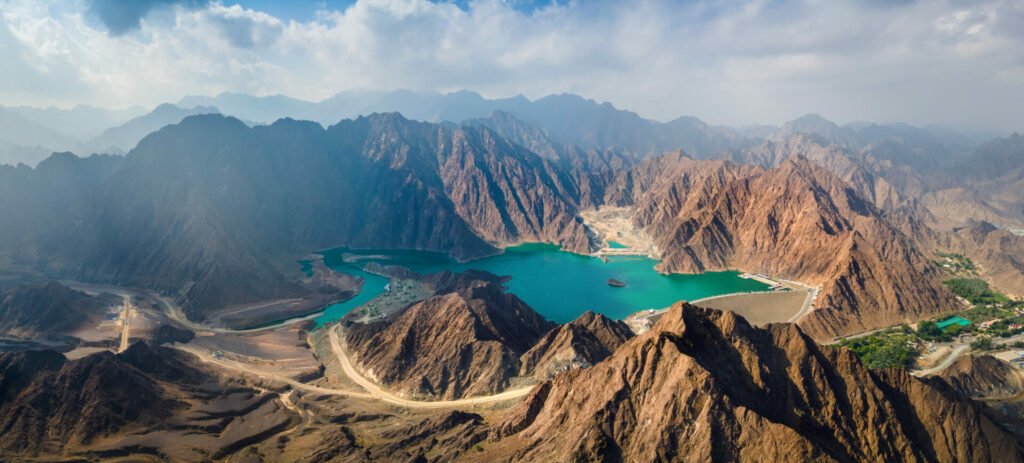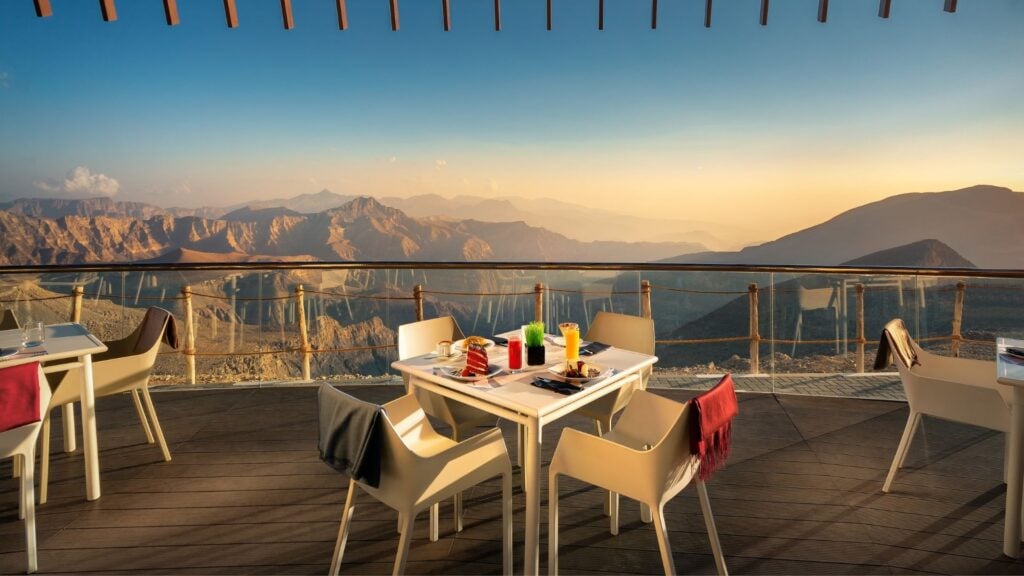‘Mountains of the Moon’ sounds like something out of a fairy tale, but the magic unfolded right in front of my eyes on a recent climbing trip to the Rwenzoris in Uganda.
Balanced on the spine of Uganda and the Democratic Republic of the Congo (DRC), the Rwenzori Mountains straddle the equator for around 100 kms.
In my bid to climb Margherita Peak on Mount Stanley, at 5,109m the highest peak in Uganda and the third highest in Africa, I had a punchy eight-day expedition to the mountains of the moon in this remote wonderland.
‘It felt as though we had emerged from a world of fantasy, where nothing was real but only a wild and lovely flight of imagination. It is well-named Mountains of the Moon.’
Mountaineer Eric Shipton
I stepped into another world full of exotic natural wonders: candy floss trees, oversized botanical specimens, towering cactus plants and totem poles set against a backdrop of snow-capped mountains.

But no matter how beautiful this backdrop was, I learnt quickly not to be fooled by its other-worldly and enchanting allure as the Mountains of the Moon was also a rapidly changeable environment. Like a domino falling, the fluffy clouds turned into rainstorms, the trickling streams into raging torrents, the spongy trails into deep alpine bogs and the rocky outcrops into ice rinks. The Rwenzoris is a playground for adventurous souls.
The Climb
The trek out of basecamp and for the rest of the first day was a sustained uphill effort. The temperature hit 30 degrees as we hiked up steeply forested terrain, climbing up big boulders and slithering over ancient tree roots. Occasionally a wooden ladder would appear to assist our ascent. A waterfall of sweat was pouring down my back. As I stopped for a break, I was mindful of the biting ants, which are highly skilled at crawling under your clothing and then letting you know they are there!
After a few hours on the trail, the wispy clouds became dense fog. The temperature quickly dropped, and extra layers were a must. Torrential rain fell for the rest of the day, making the narrow, exposed paths slippery. I was glad to have trekking poles to hand. It was a relief to make it to Sine Camp (2,596 m) and get warm and dry after a long day. The camps are basic but clean and comfortable. Their construction is, in fact, miraculous when you think all the building materials were carried up there by hand.


Hiking in ‘wellies’ was a relatively new concept for me. Initially, I could feel every lump, bump and sharp edge underfoot and was about to switch back into my hiking boots and brave the mud. But soon enough, the squelchy soft feeling felt soothing, not to mention liberating, being able to seek out and embrace the muddy puddles.
Mountain Welcome
The following night at Mutinda Camp (3588 m), as I lay in my four seasons sleeping bag, the nocturnal neighbours – rock hyrax which looks like a cross between a mouse and a rabbit – greeted us with noises that would suggest a much bigger beast. Enock, our head guide, said their sounds were welcoming us to the Mountains of the Moon. Well, it is their home, after all.
I was in total awe of the landscape. As hours and days passed, a vibrant array of tree and plant species came into view, with the unusually large lobelias and giant groundsels and tree ferns standing out. We moved from lush forest to meadows to desert to mountain terrain. It was a feast for the eyes and a tonic for the soul.

As we approached Bugata Camp (4062m), we moved slowly around thick tussock grasses, with white-flowered everlastings and puddles topped off with a glacier lake. This was the first time I noticed the effects of altitude, with a mild headache and shortness of breath.
It took four long days of trekking before I caught my first glimpse of the mighty Margherita Peak. She was impressive, with her snow-capped peak sparkling in the midday sun.
Geographically the Rwenzoris Mountains are young, forming less than 10 million years ago from faults thrusting up in the neighbouring Rift Valley. The mountains are often shrouded in mist for weeks, so I felt fortunate to see them in their full glory.
After a day of hiking, the Hunwick’s Camp (3974 m) was a welcome sight as smoke bellowed out of the chimney. The porters had arrived earlier and stoked up the wood burner. Finally, we could dry out some of our wet clothes, stockpiled from the days before. A few sets of spare base and mid-layers (fiercely guarded in dry bags) were essential for this trip as not every camp had drying facilities. As we sat around the wood burner, and let the heat soothe our worked limbs, we chatted with the guides about our summit push the following day. I turned in early to get some good rest.
Nature’s Show
The next day on our way to Margherita Camp (4485 m), Mother Nature put on a show with the beating morning sun, lunchtime rain and afternoon snow. We crossed rivers, passed lakes (spotted a few high altitude ducks!), scrambled up rocky outcrops and snaked through a maze of cactus trees. It was like moving through a forgotten world.
Our summit push started at 2am. I pulled on my Scarpa Manta mountaineering boots, perfect for the steep rocky ascent up to the first glacier. In the moonlight, the glacier sparkled in hues of pinks and purples and, in places, slightly more menacing tones of grey and black. As my eyes grew wider in amazement at the intricately sculpted glacier, my lungs compressed with the high altitude. We put on our crampons, roped ourselves together and moved carefully across the first glacier for around 30 minutes before hitting rock and taking off our crampons.




Our guides’ experience of the mountain was evident when I asked Wusia, ‘How many times have you summited Margherita Peak?’ He replied: ‘I stopped counting after 120 summits!’ Enough said.
With our head torch lights guiding us through the darkness, we climbed for several hours over rock fields reminiscent of the surface of Mars and up steep rocky gullies, making our way towards the second glacier. There was excitement in the air in anticipation of, hopefully, reaching the summit.
Smile Through The Pain
When we finally reached the next glacier, we put our crampons back on, split into two teams of two climbers, and slowly started making our way up the 60-degree glacier. I’m not sure what was working harder, my lungs gasping for air with the physical exertion of moving up the steep terrain, my legs burning from the sustained front-pointing with my crampons or my mind wandering how much further! The combination of high altitude, sickness and freezing cold temperatures made this a challenging section of the summit push. ‘Smile through the pain’ is a coping mantra I often use, and strangely, it works.

Like any mountain, the summit is always further than you think and harder than it looks, Margherita Peak was no exception. Through a decade of mountaineering, I have learned never to judge a mountain by its height – 5000m is a high-altitude environment and demands much respect.
After a sustained rock climbing effort, post glacier, we reached the summit at 7.30am. It was small and rocky, with a metal sign which read, ‘Welcome to Margherita Peak, 5109m a.s.l. The highest point in Uganda.’
The Summit
I was looking forward to glimpsing into the DRC from the summit, but the thick fog had other ideas. After a couple of summit snaps, we made our way back, over the glaciers and down the steep rocky faces. Unfortunately, the rain came down with a vengeance, and the rocks quickly became treacherous. We abseiled down the steeper sections, and even that was challenging at times. We roped together to find a safe way down. What would have taken just a couple of hours to descend took us nearly five hours, sliding down boulders and using any feature or crack in the rock to assist. It was a tiring effort.

One of our teammates had to descend before reaching the first glacier due to illness, mixed with the effects of high altitude and exposure. The porters and a rescue team were seamless in getting him down to a lower altitude. It was impressive witnessing the rescue team manoeuvre the bamboo stretcher down steep gullies and across fast-moving rivers.
The porters were the backbone of this expedition and instrumental in our teammate’s rescue as there were no other options for him to descend quickly. I was feeling exhausted after the summit push, immediately followed by a further descent down to Hunwick’s Camp (3.874 m), a night’s rest, followed by another big two days descending to get back to basecamp.
In short, The Rwenzoris is a magical wonderland that turns into a high-altitude playground. Preparation is vital – turning up with the right skills and equipment to maximise the experience and get back down safely. Good fitness, a positive mindset and the right gear are needed.
In the words of the iconic English Himalayan mountaineer, Eric Shipton: ‘It felt as though we had emerged from a world of fantasy, where nothing was real but only a wild and lovely flight of imagination. I think perhaps the range is unique. It is well-named Mountains of the Moon.’
Thanks to the Uganda Tourism Board, Great Lakes Safaris and Rwenzori Trekking Services for making this adventure possible.
Now You Can Join Holly On Her Next Climb!
Far & Wild Travel offer a bespoke trip to Uganda with Adventurer, Holly Budge, on March 26th – April 9th 2023. This 14-day trip visits the Rwenzori Mountains to climb Margherita Peak (5109m), a game drive in Queen Elizabeth National Park and an awe-inspiring trek in Bwindi Impenetrable Forest to see the Mountain Gorillas.

The trip will raise money for How Many Elephants, an award-winning NGO founded by Holly which is educating a global audience about the devastating impacts of the African elephant ivory trade, and raising vital funds for frontline rangers.
This trip costs from £7,250 per person (based on two sharing) and includes internal flights, transfers, accommodation on a full board basis and wildlife viewing excursions. International flights with Emirates from £700 per person. 01768 603 715.













